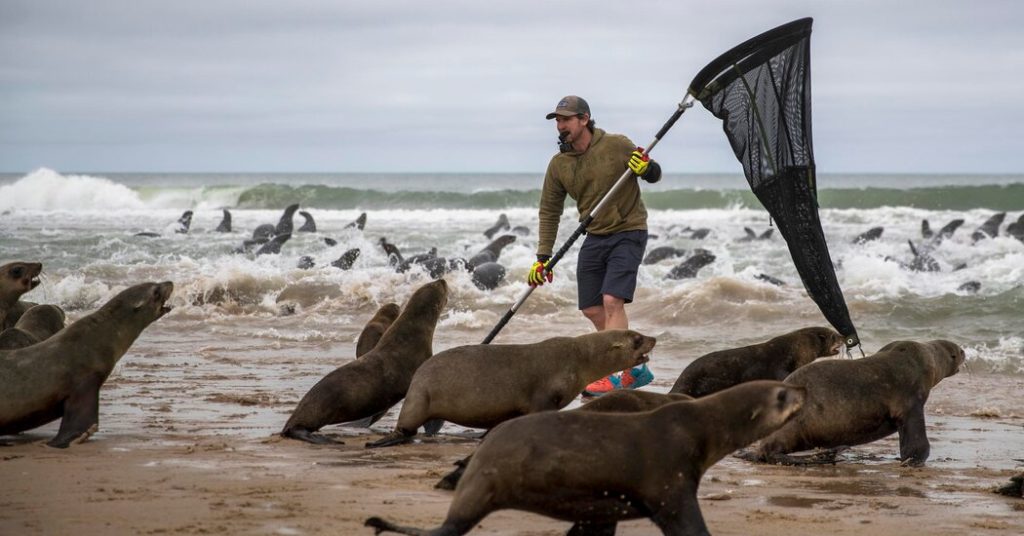Ocean Conservation Namibia, a nonprofit based on the coast of Namibia, has gained attention for its efforts to rescue seals entangled in marine garbage. The group, founded by Katja and Naude Dreyer, estimates it has rescued around 3,000 seals since 2020. The Dreyers started rescuing seals about a dozen years ago when Naude began disentangling Cape fur seals living along the country’s coast. Their rescues involve capturing seals entangled in fishing gear and other debris, with the goal of freeing them and returning them to the ocean.
The seals in the area near Walvis Bay, a major commercial fishing port, are particularly at risk of entanglement due to the presence of ocean debris. Seal pups, inquisitive and playful, often become entangled after interacting with the floating trash. Naude Dreyer’s early rescues were done using a paddle to pin down animals, but he later received a custom seal rescue net from marine ecologist Jeff Harris. This specialized net allows rescuers to safely cut away fishing wire while keeping the seal’s head protected from their sharp teeth. With this tool, Dreyer and his team have been able to rescue hundreds of seals before founding Ocean Conservation Namibia four years ago.
During the pandemic, the group’s social media posts featuring seal rescues gained widespread attention, providing comfort and happiness to viewers amidst global turmoil. The videos highlight the impact of marine debris on wildlife, with an estimated 21,000 pieces of plastic in the oceans for every person on the planet. Marine plastic is a significant threat, killing an estimated 100,000 sea mammals annually. The fishing industry is a major contributor to marine debris, accounting for about 10 percent of marine waste.
Ocean Conservation Namibia now has a team of seven and is funded by donations, with a focus on local remediation efforts to address entangled wildlife. The Dreyers, who have stopped eating fish and animal products, emphasize the importance of global mitigation efforts to tackle the issue of marine debris. The group’s rescues involve carefully planning and executing operations to free entangled seals, often captured in videos that showcase the heartbreaking scenes of animals caught in fishing gear and other debris.
The group’s rescues show seals entangled in a variety of materials, from plastic bags to fishing lines, causing severe injuries and infections. Rescuers work to free the animals, sometimes having to reopen wounds to remove deeply embedded wire. The rescued seals are freed and allowed to return to the ocean, where the salt water can help heal their wounds. The group documents the marine debris for an open source database, recording details such as the severity of wounds and the locations of entrapped animals.
Despite challenges, such as government-approved culling of seals due to competition for fish, the Dreyers remain committed to their mission of rescuing entangled wildlife. The group is occasionally called in to help other imperiled animals, including whales, dolphins, sharks, turtles, and seabirds. The Dreyers view the reports from fishing docks of entangled seals as a sign of progress in addressing the issue of marine debris. Their efforts, both locally and globally, serve as a reminder of the importance of conservation and the detrimental impact of human activities on marine ecosystems.


